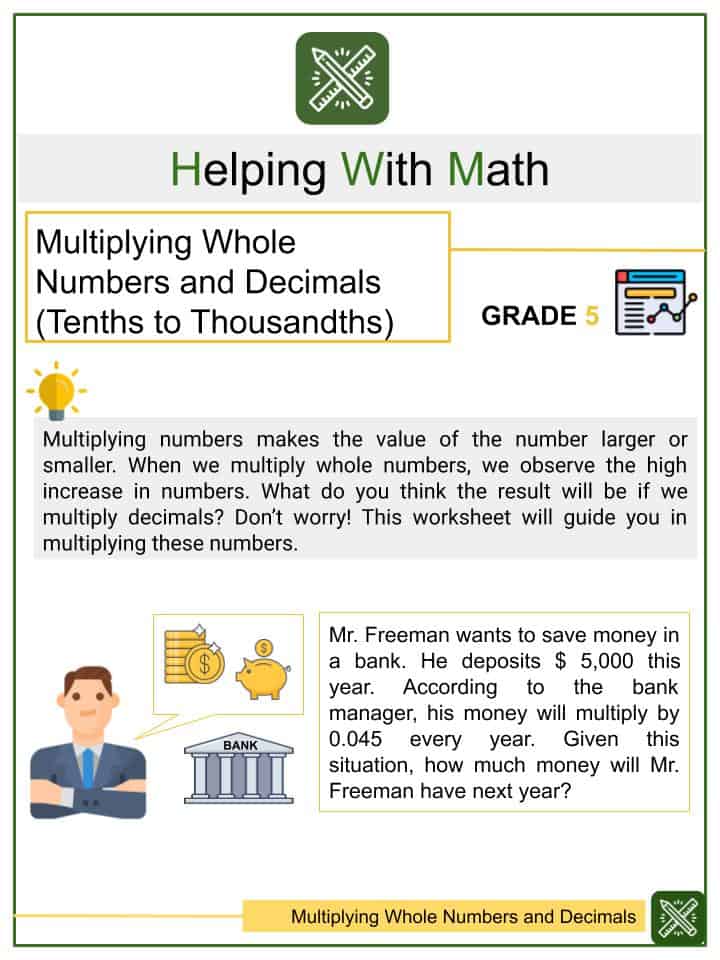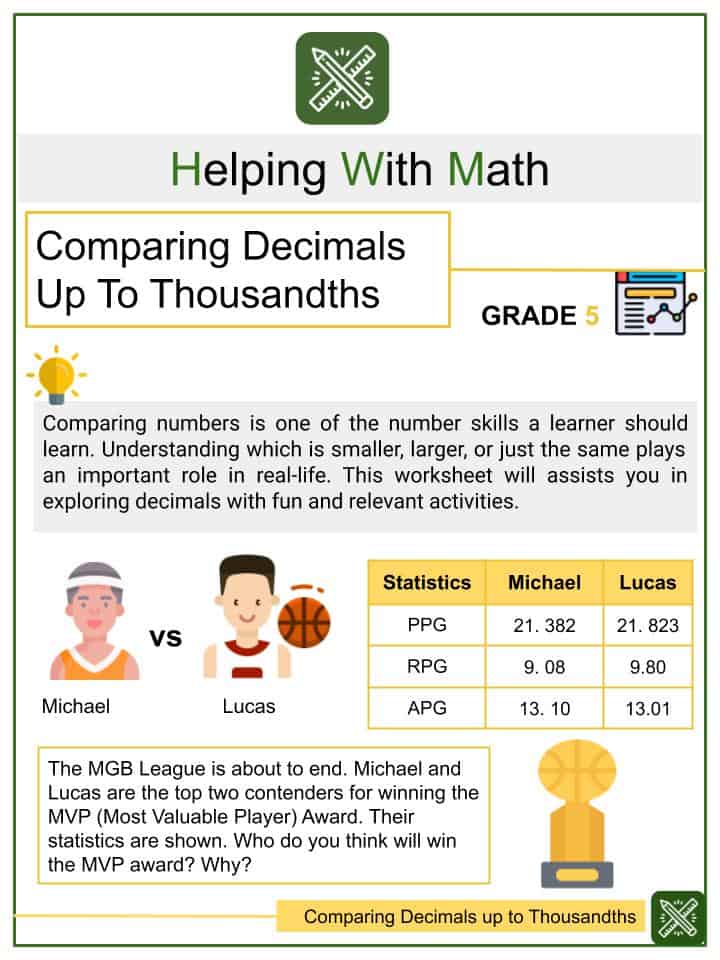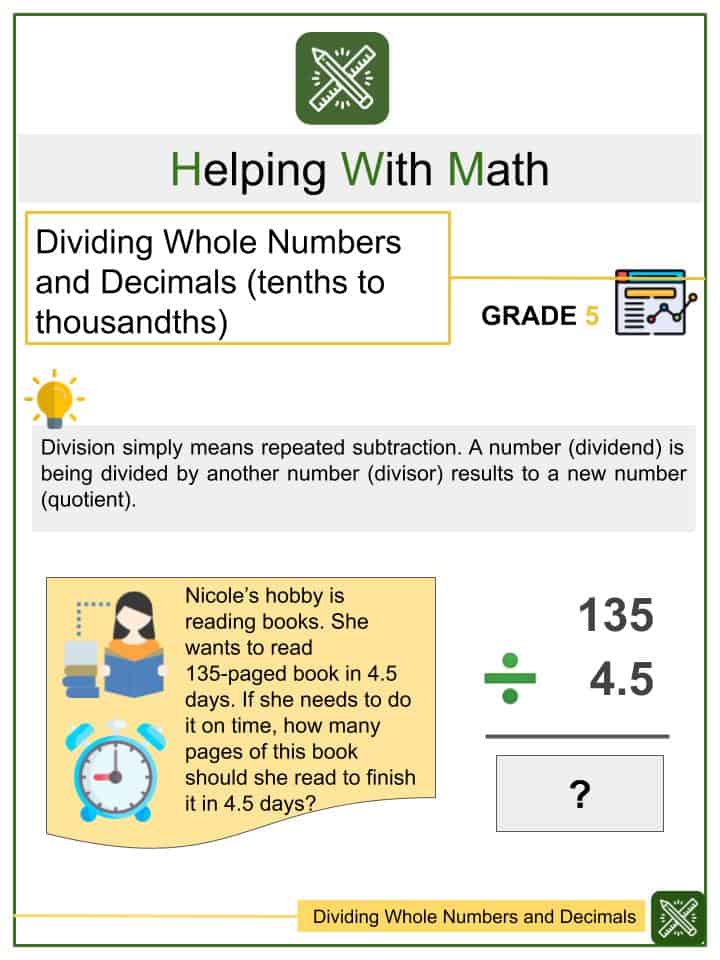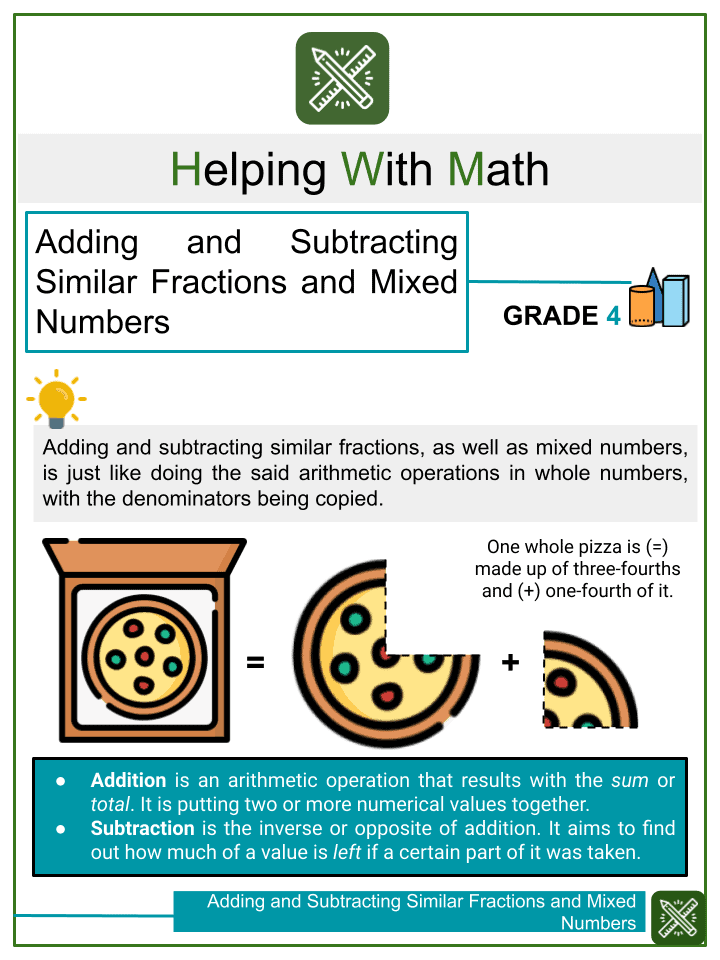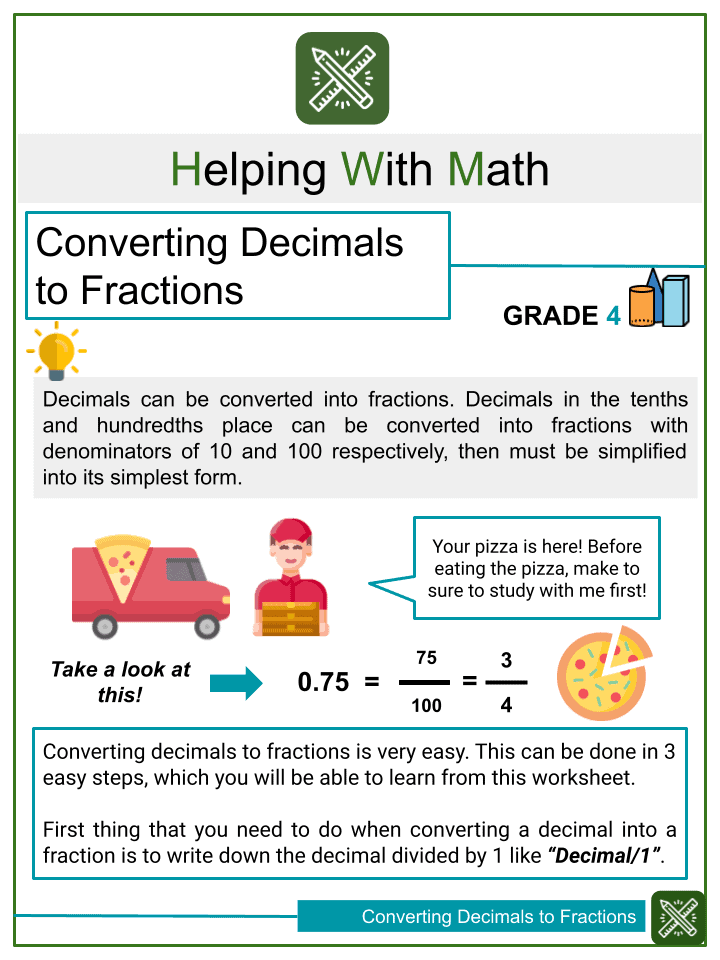Age 8-10 Math Worksheets
In this section, you can view all of our math worksheets and resources that are suitable for 8 to 10-year-olds.
We add dozens of new worksheets and materials for math teachers and homeschool parents every month. Below are the latest age 8-10 worksheets added to the site.
8-10 Years Of Age Math Learning Objectives & Standards:
- The topics and skills in this age bracket are obviously more compact that the previous age brackets’. General topics in this cluster include operations of decimals, unlike fractions, proper and improper fractions, multiplication and division of multi-digit numbers, area and perimeter of polygons, angle measurement, conversions of like units, and basic geometric terms.
- The learners in this level broaden their understanding of decimals. Together with the grasped concepts from the previous age bracket, learners will deepen their knowledge of basic concepts of decimals. They will use it in order to compare decimals using the different inequality symbols; ordering decimals that can be used to create number lines; convert fractions to decimals and vice versa; write decimals in expanded and standard forms; add, subtract, and round decimals; and solve word problems involving decimals.
- They attain mastery of the four basic fundamental math operations involving multi-digit whole numbers. This will help them to discover the world of factors and multiples of numbers. The learned skills of basic operations should also be used to solve real-life situations like determining the total bill after a meal, the total price of goods in the supermarket, the change after a $100 bill is handed out to the cashier, and to know how much is the price of a good per piece given in a bundle.
- With the continuation of deepening their understanding of fractions, learners will put emphasis not only with like fractions but also unlike fractions (fractions with different denominators). Here, they will acquire the needed skills by differentiating and illustrating proper and improper fractions, adding and subtracting proper and improper fractions, comparing like and unlike fractions, adding and subtracting these kinds of fractions, simplifying fractions, ordering fractions to create line graphs and line plots with fractional units, and solve average to challenging word problems involving fractions.
- This age bracket also has a wide range of geometric topics. They will delve into the concepts and strategies of computing for the perimeter and area of different types of polygons given its identified dimensions. They will also experience deriving the dimensions from the given area. In the latter part, they will deal with various word problems where area and perimeter can be used to arrive with the final and correct answer.
- Aside from perimeter and area, learners will also investigate the meaning and application of points, lines, and planes. Here, they will build their own understanding of the foundation of all theorems, corollaries, axioms, and definitions of other geometric principles. In addition, they will initially understand what an angle is, its different types based on their angle measurement, and how it is useful in daily lives. They will have an opportunity to distinguish the different types of quadrilaterals by their renowned properties and will classify them based on their hierarchy. At the end, they will reinforce their knowledge of shape transformations and symmetrical shapes by dealing with more illustrative exercises and word problems.
- Just like the previous stages, learners in this age bracket will have an opportunity to strengthen and deepen their understanding of measurements by converting one unit to another. But this time, examples and exercises are limited to like units only. They will be asked to express a given measurement to a larger or smaller unit.











